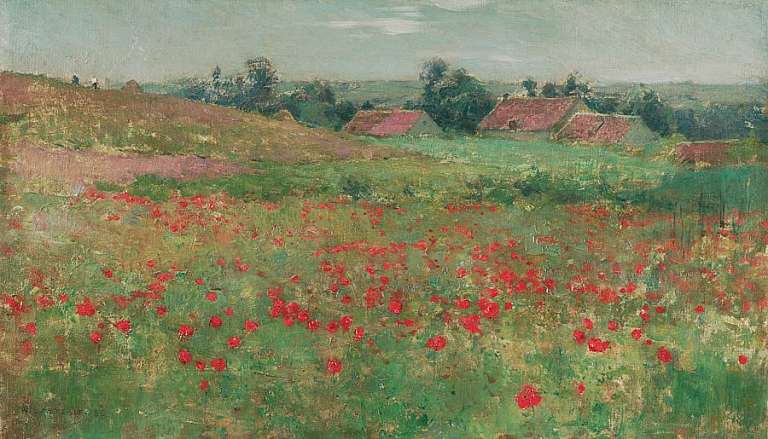
America’s Impressionism: Echoes of a Revolution
Jan 23, 2021 - May 9, 2021
Presented by: Presented by The Joe Orgill Family Fund for Exhibitions
Organized by: Organized by Dixon Gallery and Gardens, Brandywine River Museum of Art, and San Antonio Museum of Art
From the late nineteenth century to World War II, American painters adapted Impressionism to their own ends, shaping one of the most enduring, complex, and contradictory styles of art ever produced in the United States. Americans were largely introduced to Impressionism in 1886 through a major New York exhibition spearheaded by the Parisian art dealer Paul Durand-Ruel. Whereas French Impressionism burst onto the Paris scene with a shocking exhibition in 1874, in the United States, the style arrived after more than a decade of discussion and debate. America’s Impressionism: Echoes of a Revolution explores the nation’s embrace of Impressionism, the innovations Americans brought to the Impressionist experiment and its resonance across two generations of American painting. As American artists interpreted Impressionism, they effectively created a new genre and passed it down to subsequent generations of American artists. Through more than fifty paintings, the exhibition presents an original and nuanced history of the American engagement with the French style, one that was both richer and more ambivalent than mere imitation.
In re-examining the transfer of a European style to the United States, the selected works in America’s Impressionism offer a window into the complex act of translation as Impressionism was introduced, imitated, and modified over a period of fifty years. The style eventually spread across the country with regional distinctions. For many, American Impressionism finds its ultimate expression in Northeastern locales, such as Old Lyme, Connecticut, and Shinnecock on Long Island, yet there were artists applying the Impressionist aesthetic to the American landscape as far west as Texas and California. America’s Impressionism: Echoes of a Revolution presents the fascinating story of American artists coming to terms with a new modern style as seen through paintings of the rural and suburban landscape, sentimental scenes of women and children, and architecture of bygone eras.